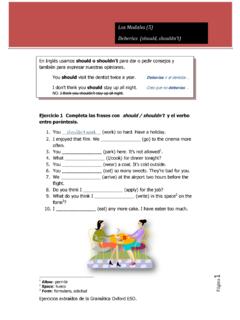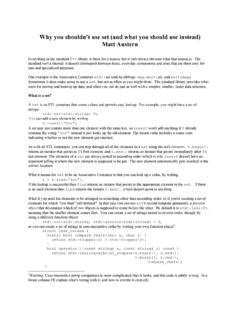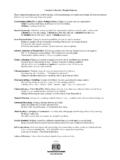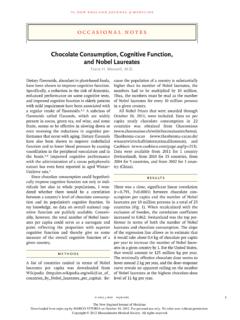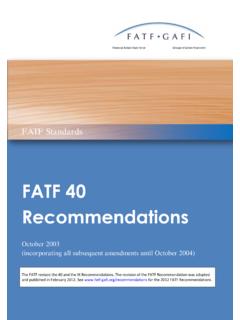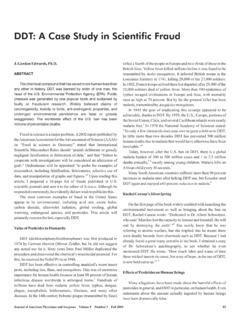Transcription of Section 15 IMAGES OF ALCOHOL AND DRUG ABUSE Brain ...
1 94 Section 15 IMAGES OF ALCOHOLAND drug ABUSEB rain Pollution and the RealReason You shouldn t UseStudying the effects of drugs and ALCOHOL on the Brain has clearly been one of themost informative and fascinating parts of my work. I had a sense growing up that drugsand ALCOHOL weren t helpful to my overall health. I might add, this notion was helpedalong by getting drunk on a six pack of Michelob and half a bottle of champagne when Iwas sixteen years old I was sick for three days. After that, I ve been lucky enough tostay away from drugs and ALCOHOL .
2 After doing this work there s no way you could get meto do marijuana, heroin, cocaine, methamphetamine, LSD, PCP, inhalants or any morethan a glass or two of wine or beer. These substances damage the patterns in your Brain ,and without your Brain you are not is really quite a bit of scientific literature on the physiological effects ofdrugs and ALCOHOL on the Brain . SPECT has demonstrated a number of abnormalities insubstance abusers in Brain areas known to be involved in behavior, such as the frontal andtemporal lobes. There are some SPECT similarities and differences between the damagewe see caused by the different substances of ABUSE .
3 I ll discuss the differences in drugabuse patterns below. There tends to be several similarities seen among classes of abuseddrugs. The most common similarity among drug and ALCOHOL abusers is that the Brain hasan overall toxic look to it. In general, the SPECT studies look less active, more shriveled,and overall less healthy. A scalloping effect is common amongst drug abusing Brain patterns show smooth activity across the cortical surface. Scalloping is awavy, rough sea-like look on the Brain s surface. I also see this pattern in patients whohave been exposed to toxic fumes or oxygen deprivation.
4 My research assistant says thatthe drug brains she has seen look like someone poured acid on the Brain . Not a pretty can be helpful in evaluating the effects of drugs and ALCOHOL on the 3D surface IMAGES several substances of ABUSE appear to show consistent patterns. Forexample, cocaine and methamphetamine ABUSE appear as multiple small holes across thecortical surface; heroin ABUSE appears as marked decreased activity across the wholecortical surface; heavy marijuana ABUSE shows decreased activity in the temporal lobesbilaterally and heavy ALCOHOL ABUSE shows marked decreased activity throughout the findings tend to improve with abstinence, although long term use has beenassociated with continued SPECT deficits seen years after abstinence.
5 SPECT can behelpful in several ways in drug and ALCOHOL ABUSE . First, 3D surface SPECT IMAGES ofdrug and ALCOHOL abusers can be used in drug prevention education. Second, SPECT95studies can help break though the denial that often accompanies substance ABUSE . Whenone is faced with their own abnormal cerebral perfusion it is hard to remain in , SPECT may help evaluate if there is an underlying neuropsychiatric condition thatneeds our experience, marijuana usage typically causes decreased activity in theposterior temporal lobes bilaterally. The damage can be mild or severe, depending on howlong a person used, how much use occurred, what other substances were used (nicotine is apowerful vasoconstrictor) and how vulnerable a particular Brain is.
6 For more informationsee Dr. Amen s article High Resolution Brain SPECT Imaging in Marijuana Smokers withAD/HD, Journal of Psychoactive Drugs, Volume 30, No. 2 April-June 1998. Pgs 1-13. 18 y/o 3 year history of 4 x week use 16 y/o -- 2 year history of daily ABUSE underside surface view underside surface view decreased pfc and temporal lobe activity prefrontal and temporal lobe activity38 y/o -- 12 years of daily use 28 y/o -- 10 years of mostly weekend use underside surface view underside surface view decreased pfc and temporal lobe activity decreased pfc and temporal lobe activity97 Off and On Marijuana underside
7 Surface view, off THC underside surface view, on THC decreased pfc and temporal lobe activity severe overall decreased activity underside active view, off THC underside active view, on THCincreased deep left temporal lobe activity overall calming of activity98 top-down active view, off THC top-down active view, on THC patchy increased uptake overall calming of activityThis 57-year-old physician had abused marijuana for 30 years. We performed thisSPECT series because he had been unable to stop using without feeling very angry,irritable, agitated and first study (those IMAGES in the right column) was performed after he came tothe clinic intoxicated from 3 straight days of heavy usage.
8 The second study (those imagesin the left column) was performed after he abstained from marijuana usage for 1 the study without marijuana shows decreased temporal lobe activity (likelyfrom the chronic marijuana usage), but also patchy increased uptake, especially increasedactivity in the deep left temporal lobe (often associated with anger, irritability and anxiety).The study with heavy marijuana usage shows marked overall decreased activity, especiallyin the prefrontal cortex and temporal lobes (associated with attention, memory andmotivational problems) but also there is a decrease in the overactive areas noted in the offmarijuana scan series argues for the possibility of self-medication, but unfortunatelythis medication has the side effect of causing the potential for long term damage to hisbrain99 Heroin & Methadone Normal view 39 y/o -- 25 yr hx of frequent heroin use top down surface view top down surface view full.
9 Symmetrical activity marked overall decreased activity 39 y/o -- 25 yrs of frequent heroin use 40 y/o, 7 yrs on methadone heroin 10 yrs prior front on surface view top down surface viewmarked overall decreased activity marked decreased overall activity100 Cocaine &Methamphetamine 52 y/o 28 yr hx frequent meth use 24 y/o -- 2 yr hx of frequent cocaine use top down surface view top down surface view multiple holes across cortical surface multiple holes across
10 Cortical surface 28 y/o 8 yrs heavy meth use 36 y/o, 10 years frequent meth front on surface view top down surface view marked overall decreased activity multiple holes across cortical surface101 Alcohol38 y/o 17 years of heavy weekend use underside surface view underside surface view front on surface view right side surface viewmarked overall decreased activity102 Alcohol48 y/o -- 22 years of daily use with history of past head injury underside
